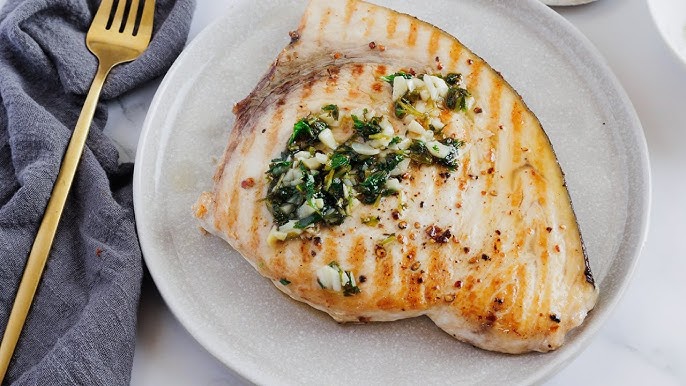Cod Fish Recipe: If you’re craving something light, flavorful, and healthy, cod fish might just become your new favorite go-to meal. Cod is that mild white fish that works with nearly every flavor combination, making it a versatile protein choice for home cooks.
Whether you’re baking it for a light dinner, pan-searing it for that golden crisp, or tossing it in tacos, cod delivers big-time on taste and simplicity.
This step-by-step guide will walk you through everything you need to make a perfect cod fish dish, even if you’re a kitchen newbie.
Why Choose Cod?
Cod isn’t just popular because it tastes good. It’s a low-fat, high-protein fish that’s easy to cook and works with many seasonings and cooking styles. It’s also widely available in grocery stores and not as expensive as some other seafood. Because of its mild flavor, even people who don’t usually like fish find cod enjoyable. Plus, it absorbs marinades and sauces beautifully—meaning you can get creative in the kitchen without too much stress.
Nutritional Benefits of Cod
Cod is a great source of lean protein, meaning it’s filling without loading you up on fat. One 3-ounce serving of cod contains around 90 calories, 20 grams of protein, and just 1 gram of fat. It’s also rich in essential nutrients like Vitamin B12, iodine, and omega-3 fatty acids, which are vital for brain health, metabolism, and heart function. Including cod in your weekly meal plan is an easy way to stay on track with health goals without sacrificing flavor.
Essential Ingredients for Cod Fish Recipe
To keep things simple but delicious, you don’t need a pantry full of ingredients. In fact, the best cod fish recipes often require just a handful of quality components.
Fresh vs. Frozen Cod
Fresh cod is always the best if you can get it. It’s firmer, flakier, and generally has better flavor. But don’t worry if fresh isn’t available—frozen cod works great too. Just make sure to thaw it properly in the fridge overnight or under cold water before cooking. Never thaw cod in warm water or at room temperature—it can affect the texture and safety of the fish.
Spices and Herbs to Enhance Flavor
Here are the must-have seasonings for a classic cod fish recipe:
- Salt and freshly ground black pepper
- Paprika (for smokiness and color)
- Garlic powder or fresh minced garlic
- Lemon zest or juice (adds brightness)
- Fresh herbs like parsley, dill, or thyme
Feel free to experiment. Cod is like a blank canvas—it pairs well with everything from Cajun seasoning to curry powders.
Optional Add-ons for Extra Taste
Want to elevate the flavor even more? Consider:
- A drizzle of olive oil or a pat of butter
- A sprinkle of parmesan cheese for a crispy finish
- Crushed nuts like almonds or pistachios for crunch
- Cherry tomatoes, capers, or olives for a Mediterranean twist
Kitchen Tools You’ll Need
Before you start cooking, gather your kitchen gear. Here’s what you’ll need:
- A sharp knife (for trimming and portioning)
- Cutting board
- Mixing bowl (for seasoning)
- Baking dish or skillet (depending on cooking method)
- Spatula or tongs
- Meat thermometer (optional but helpful)
Having these ready will make the cooking process smooth and enjoyable.
Step-by-Step Instructions to Cook Cod Fish
Now, let’s get to the fun part—cooking! Follow these easy steps to make a juicy, flavorful cod fish dish from scratch.
Step 1: Preparing the Cod
Rinse the cod under cold water and gently pat it dry with paper towels. Removing excess moisture helps the seasoning stick and gives you a better texture when cooked. Check for any remaining bones and remove them with tweezers.
If your fillets are thick, you can cut them into even portions so they cook uniformly.
Step 2: Seasoning and Marinating
Place the cod in a mixing bowl or directly in a baking dish. Drizzle with olive oil, then rub the spices (salt, pepper, garlic powder, paprika) all over the fillets. If using lemon juice or zest, add it now.
Let the fish marinate for 10–15 minutes if you have time. This helps the flavors soak in, though it’s not mandatory if you’re in a rush.
Step 3: Cooking Methods – Baking, Pan-Frying, Grilling
Cod fish is one of the most versatile proteins when it comes to cooking methods. Whether you want something light and flaky or golden and crispy, there’s a method that fits your preference. Here are three popular ways to cook cod:
Baking:
- Preheat your oven to 400°F (200°C).
- Place the seasoned cod in a greased baking dish.
- Add a few lemon slices or sprigs of fresh herbs on top for extra aroma.
- Bake uncovered for about 12–15 minutes, depending on thickness. The fish should flake easily with a fork when it’s done.
- Optional: Broil for the last 2 minutes to get a golden crust.
Pan-Frying:
- Heat a skillet over medium-high heat and add a tablespoon of olive oil or butter.
- Place the cod fillet in the pan, presentation side down (the smoother side).
- Cook for 3–4 minutes per side or until golden brown and fully cooked.
- Don’t flip it too often—let it get a nice sear before turning.
Grilling:
- Preheat your grill and oil the grates well.
- Place the cod on a piece of foil or use a grill basket to prevent it from falling apart.
- Grill for about 3–5 minutes per side with the lid closed.
- Use gentle tongs or a fish spatula to handle the cod.
Each method has its charm—baking is the healthiest and simplest, frying gives it that crispy edge, and grilling adds a smoky flavor that’s unbeatable.
Step 4: Checking for Doneness
Not sure if your cod is cooked all the way through? Here’s how to tell:
- Flake test: Insert a fork at the thickest part and twist gently. If it flakes easily and is opaque all the way through, it’s done.
- Temperature check: The internal temperature should be around 145°F (63°C) for safe eating.
- Look and feel: The flesh should be firm yet moist. Undercooked cod looks translucent and feels rubbery, while overcooked cod is dry and crumbly.
Once it’s done, remove it from heat immediately to prevent overcooking, which is one of the most common fish-cooking mistakes.
Step 5: Serving Suggestions
Cod fish is delicious on its own, but pairing it with the right sides takes your meal to the next level. Here are some winning combos:
- With roasted vegetables: Carrots, zucchini, bell peppers, and sweet potatoes make colorful and nutritious sides.
- Over rice or quinoa: A bed of grains adds a hearty touch to your plate.
- Topped with salsa or chutney: Mango salsa, tomato relish, or herb chutney enhances flavor and presentation.
- With a creamy sauce: Lemon butter, garlic aioli, or tartar sauce are popular choices.
For a full meal, consider a crisp green salad or a bowl of soup to start. Want to make it fancy? Serve with a glass of white wine like Sauvignon Blanc or Pinot Grigio.
Tips and Tricks for the Best Cod Fish
Cooking cod isn’t difficult, but there are a few pro-level tips that can help you nail it every time.
Avoiding Overcooking
Cod cooks quickly, so keep your eye on the clock. It can go from perfectly tender to bone-dry in just a couple of minutes. Set a timer, especially if you’re baking or grilling. Also, let the fish rest for a minute or two after cooking to lock in moisture.
Making It Crispy or Tender
Want a crispy exterior? Lightly coat the fish in flour or breadcrumbs before frying. You can even dip it in beaten egg and panko for that extra crunch. If tenderness is your goal, consider poaching it gently in a broth or milk—this method results in silky, melt-in-your-mouth texture.
Use a hot pan when frying and don’t overcrowd it. Moisture is the enemy of crispiness, so dry your fillets well before cooking.
Common Mistakes to Avoid
Even though cooking cod is straightforward, there are a few common missteps that can make or break your dish. Avoid these pitfalls to guarantee a perfect outcome every time:
- Overcooking the Fish
This is the number one mistake. Cod is a delicate fish that can become dry and chewy if left on the heat for too long. Stick to the recommended cooking times and check for doneness early. - Not Drying the Fish Before Cooking
If the cod isn’t properly dried, it won’t sear well and might even steam instead of fry, especially in a pan. Always pat it dry with a paper towel to remove excess moisture before seasoning. - Underseasoning
Cod has a mild flavor, which means it needs a little help from herbs, spices, and acids (like lemon juice) to shine. Don’t be afraid to season it generously. - Using Too Much Oil or Butter
While fat adds flavor, too much can make the fish greasy and mask its natural taste. A light drizzle or brush is all you need. - Using the Wrong Cooking Method for the Dish
Not all cooking methods suit every kind of cod recipe. For example, you wouldn’t want to pan-fry cod for a stew or poach it for tacos. Match the cooking style to your intended final dish.
Variations of Cod Fish Recipe
Once you’ve mastered the basics, you can mix things up with different international or themed recipes. Cod is a chameleon—it takes on whatever flavors you throw at it.
Mediterranean Style Cod
For a healthy, heart-friendly option, try Mediterranean-style cod. Season the fish with garlic, lemon, oregano, and olive oil. Add sliced olives, cherry tomatoes, and capers to the baking dish, and top everything with crumbled feta. Bake until flaky and enjoy with couscous or a simple Greek salad.
Cod Fish Tacos
This crowd-pleaser is perfect for weeknights or casual get-togethers. Season cod with cumin, paprika, lime juice, and a touch of chili powder. Pan-fry or grill the fish, then flake it into warm corn tortillas. Top with cabbage slaw, avocado slices, sour cream, and salsa. Add a squeeze of lime for that fresh finish.
Cod with Lemon Butter Sauce
Want to elevate your dinner? Sear the cod in butter until golden, then make a quick pan sauce using garlic, lemon juice, and more butter. Pour the sauce over the cooked fish and serve with steamed veggies or mashed potatoes. It’s simple but feels gourmet.
Health Benefits of Eating Cod Regularly
Cod isn’t just tasty—it’s also incredibly good for you. Adding it to your diet comes with several health perks:
- Heart Health: Cod is low in saturated fat and high in omega-3 fatty acids, which can reduce the risk of cardiovascular disease.
- Weight Management: With only about 90 calories per 3-ounce serving, cod is a lean source of protein that keeps you full without overloading you on fat or calories.
- Brain Function: Thanks to its B vitamins and omega-3s, cod supports cognitive function and mental clarity.
- Thyroid Health: Cod is rich in iodine, which is essential for a healthy thyroid.
Eating cod a couple of times a week can make a noticeable difference in your energy levels and overall well-being.
Storing and Reheating Leftovers
Got leftovers? No problem. Cod stores and reheats well if you follow a few simple guidelines:
- Storage: Let the fish cool completely, then store it in an airtight container in the fridge. It will stay fresh for up to 3 days.
- Freezing: Cod can be frozen for up to 2 months. Wrap it tightly in foil or plastic wrap, then place it in a freezer-safe bag or container.
- Reheating: The best way to reheat cod is gently—in the oven at 275°F (135°C) for 10–15 minutes or until warmed through. Avoid microwaving, which can dry it out and make it rubbery.
FAQs about Cod Fish Recipe
Q1: Can I cook cod fish from frozen?
Yes, but it’s best to thaw it first for even cooking. If you’re short on time, bake frozen cod at a slightly lower temperature for a longer period.
Q2: What’s the best side dish for cod fish?
Roasted vegetables, mashed potatoes, rice, or a light salad pair wonderfully with cod.
Q3: How do I prevent cod from sticking to the pan?
Use a non-stick skillet or preheat your pan with oil before adding the fish. Make sure the fish is dry and don’t move it until it naturally releases from the pan.
Q4: Can I marinate cod overnight?
No, avoid long marinades. Cod is delicate—30 minutes is more than enough. Longer than that can make it mushy.
Q5: What sauce goes best with cod?
Lemon butter, garlic cream, tartar sauce, or even a spicy aioli are excellent choices depending on the dish style.
Conclusion
Cooking cod fish at home doesn’t have to be intimidating. With the right ingredients, tools, and a little bit of know-how, you can whip up a delicious, restaurant-quality meal in under 30 minutes. Whether you bake it, pan-fry it, or grill it, cod is the kind of dish that never goes out of style. It’s healthy, versatile, and incredibly satisfying—perfect for a quick dinner or a special occasion. So go ahead, grab that fillet and make magic in your kitchen.



